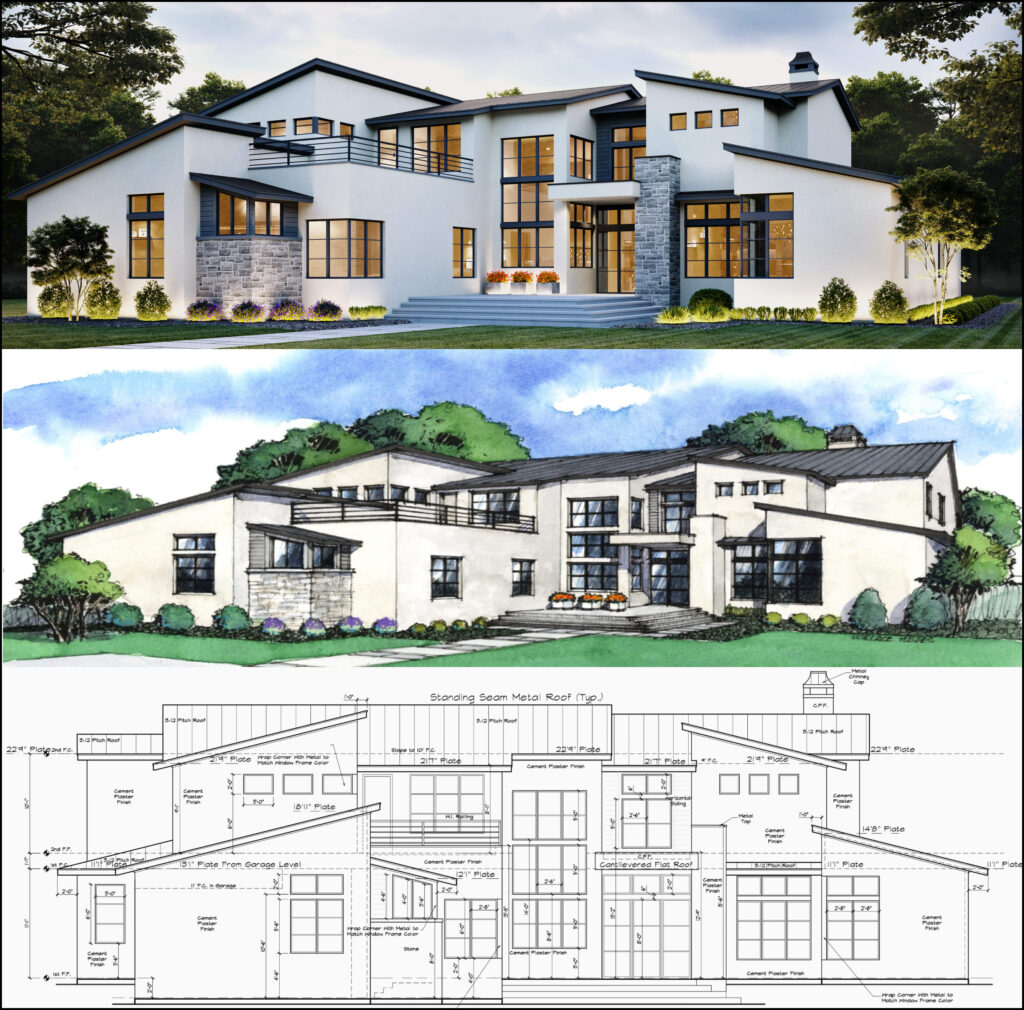Recognizing the Collaborative Refine Between Architects and Engineers in Modern Construction Projects
The collective process in between engineers and designers is important in modern construction jobs, as it integrates design intent with design feasibility. Checking out these characteristics discloses insights that can considerably influence project results and total industry standards.
The Value of Collaboration
The collective harmony in between designers and designers is essential for the successful awareness of any kind of construction project. This partnership combines distinctive competence and viewpoints, enabling the combination of ingenious style with sensible design solutions. By interacting, designers and engineers can make sure that a job not just fulfills visual and useful needs yet also abides by safety, sustainability, and budgetary constraints.
Collaboration fosters a shared vision, helping with the alignment of goals and expectations from the outset. This alignment is essential in dealing with potential challenges and mitigating risks that can emerge throughout the task lifecycle. Furthermore, a collective method allows for the efficient allocation of sources, maximizing both time and cost.
The importance of cooperation includes the iterative process of layout and building and construction, where comments from engineers can educate architectural choices, bring about even more feasible and lasting styles. Conversely, engineers can influence engineers to assume creatively concerning how to accomplish structural honesty without jeopardizing artistic intent. Inevitably, the collaborative partnership between engineers and engineers is not just helpful; it is essential to the development of top quality, useful, and innovative constructed environments that fulfill the needs of culture.
Communication Methods and Tools
Efficient interaction methods and devices are important for promoting collaboration between engineers and engineers throughout the job lifecycle. Developing clear channels of interaction is vital to make sure that all group participants are lined up with task objectives, timelines, and obligations. Normal meetings, both in-person and virtual, supply possibilities for stakeholders to talk about progression, address issues, and make educated decisions.
Using task management software application, such as BIM (Structure Details Modeling) systems, enhances partnership by allowing real-time sharing of layout alterations and technical specs. These devices facilitate openness, allowing architects and engineers to picture adjustments and analyze their impact on the overall project.

Shared Objectives and Project Vision

Developing shared goals includes open discussion and a complete understanding of each discipline's contributions. Engineers generally concentrate on layout intent, spatial relationships, and individual experience, while designers emphasize structural stability, systems capability, and compliance with laws (cda architects). When these perspectives are lined up, the outcome is a natural project that sticks to both innovative desires and technical feasibility
Additionally, a distinct task vision fosters accountability among team participants, encouraging each individual to take possession of their duty in attaining the desired outcome. Regular check-ins and collaborative workshops can even more strengthen this dedication, permitting changes to be made as the task evolves. Ultimately, a shared vision not just about his enhances team effort however likewise elevates the quality of the final deliverable, resulting in successful project completion.
The Duty of Modern Technology
Leveraging modern technology has become necessary in enhancing cooperation between engineers and engineers. The assimilation of advanced software program tools promotes real-time communication and details sharing, enabling groups to work much more successfully and efficiently. Structure Information Modeling (BIM) sticks out as a pivotal innovation, permitting both engineers and engineers to produce thorough 3D models that encapsulate layout intent and architectural integrity. This common graph reduces misconceptions and simplifies the decision-making process.
Furthermore, cloud-based platforms allow smooth cooperation, permitting task stakeholders to accessibility and upgrade task information from anywhere. This cultivates a society of openness and liability, as adjustments can be tracked and evaluated in real-time. Furthermore, mobile applications further improve interaction, giving on-site groups with immediate accessibility to project specifications and updates.
Arising modern technologies such as expert system and artificial intelligence are likewise beginning to play a function in predictive analysis, aiding groups recognize prospective problems before they occur. Ultimately, the role of modern technology in architecture-engineering cooperation not just enhances workflow efficiencies yet likewise improves innovation, leading to even more successful project outcomes. By welcoming these technological developments, architects and designers can make sure a more natural and efficient collaborative procedure throughout the building lifecycle.
Case Researches in Successful Partnerships
Many study highlight the profound influence of efficient collaborations between architects and designers on project results. One noteworthy instance is the collaboration on the High Line in New York City City, where landscape architects, designers, and urban planners worked with each other to transform an published here abandoned railway into a vivid public park. This multidisciplinary method not just enhanced the visual quality however additionally guaranteed architectural safety and ecological sustainability.
Another exemplary case is the style and construction of the Sydney Music Hall. The collaboration between designer JÃ ¸ registered nurse Utzon and structural engineer Ove Arup exhibited innovative analytical. Their partnership permitted the renowned shell-like style while addressing complicated design challenges, eventually causing a classic architectural masterpiece.
The Burj Khalifa in Dubai additionally shows the value of collaborative efforts. cda architects. The combination of design and design competence made it possible for the task team to achieve unmatched heights while sticking to security laws and visual vision
These instances emphasize the importance of More Bonuses communication, trust, and shared purposes. In today's complicated building atmosphere, such collaborations are vital to navigating difficulties and providing projects that meet both practical and visionary goals.
Conclusion
In final thought, the collaboration in between designers and engineers is crucial for the success of modern-day building projects. Reliable communication techniques, a common project vision, and the assimilation of sophisticated technologies are vital parts that promote this partnership.